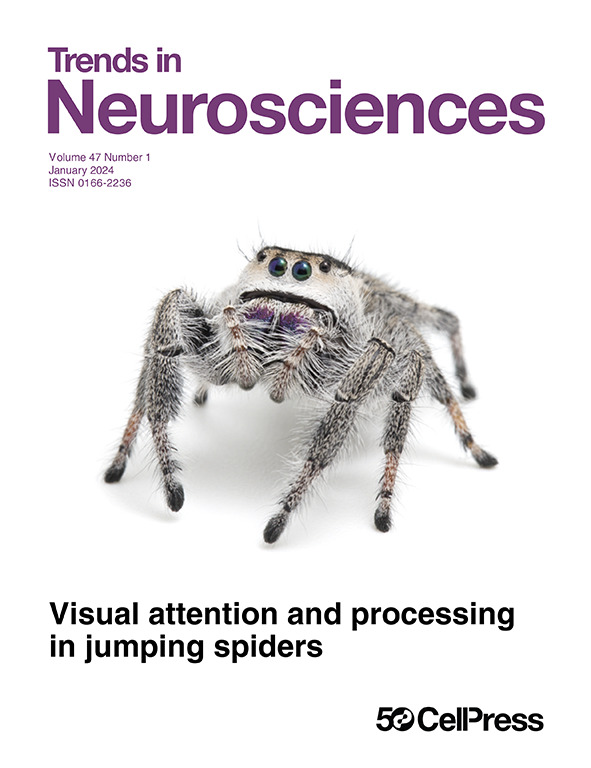CAMs指挥:衰老的脑巨噬细胞可微调中风免疫反应。
IF 14.6
1区 医学
Q1 NEUROSCIENCES
引用次数: 0
摘要
中枢神经系统相关巨噬细胞(CAMs)是免疫细胞的一个独特亚群,位于血液和脑实质的交界处。Levard 及其同事最近在一项小鼠研究中发现,中枢神经系统相关巨噬细胞只调节老年动物中风后的免疫细胞贩运、内皮细胞活化和抗原递呈,这强调了使用转化相关模型研究老年相关疾病的重要性。本文章由计算机程序翻译,如有差异,请以英文原文为准。
CAMs in command: aging brain macrophages fine-tune stroke immune responses.
Central nervous system-associated macrophages (CAMs) are a unique subset of immune cells located at the interface between the blood and the brain parenchyma. In a recent study in mice, Levard and colleagues found that CAMs regulate immune cell trafficking, endothelial activation, and antigen presentation following stroke exclusively in aged animals, underscoring the importance of using translationally relevant models for studying age-related diseases.
求助全文
通过发布文献求助,成功后即可免费获取论文全文。
去求助
来源期刊

Trends in Neurosciences
医学-神经科学
CiteScore
26.50
自引率
1.30%
发文量
123
审稿时长
6-12 weeks
期刊介绍:
For over four decades, Trends in Neurosciences (TINS) has been a prominent source of inspiring reviews and commentaries across all disciplines of neuroscience. TINS is a monthly, peer-reviewed journal, and its articles are curated by the Editor and authored by leading researchers in their respective fields. The journal communicates exciting advances in brain research, serves as a voice for the global neuroscience community, and highlights the contribution of neuroscientific research to medicine and society.
 求助内容:
求助内容: 应助结果提醒方式:
应助结果提醒方式:


